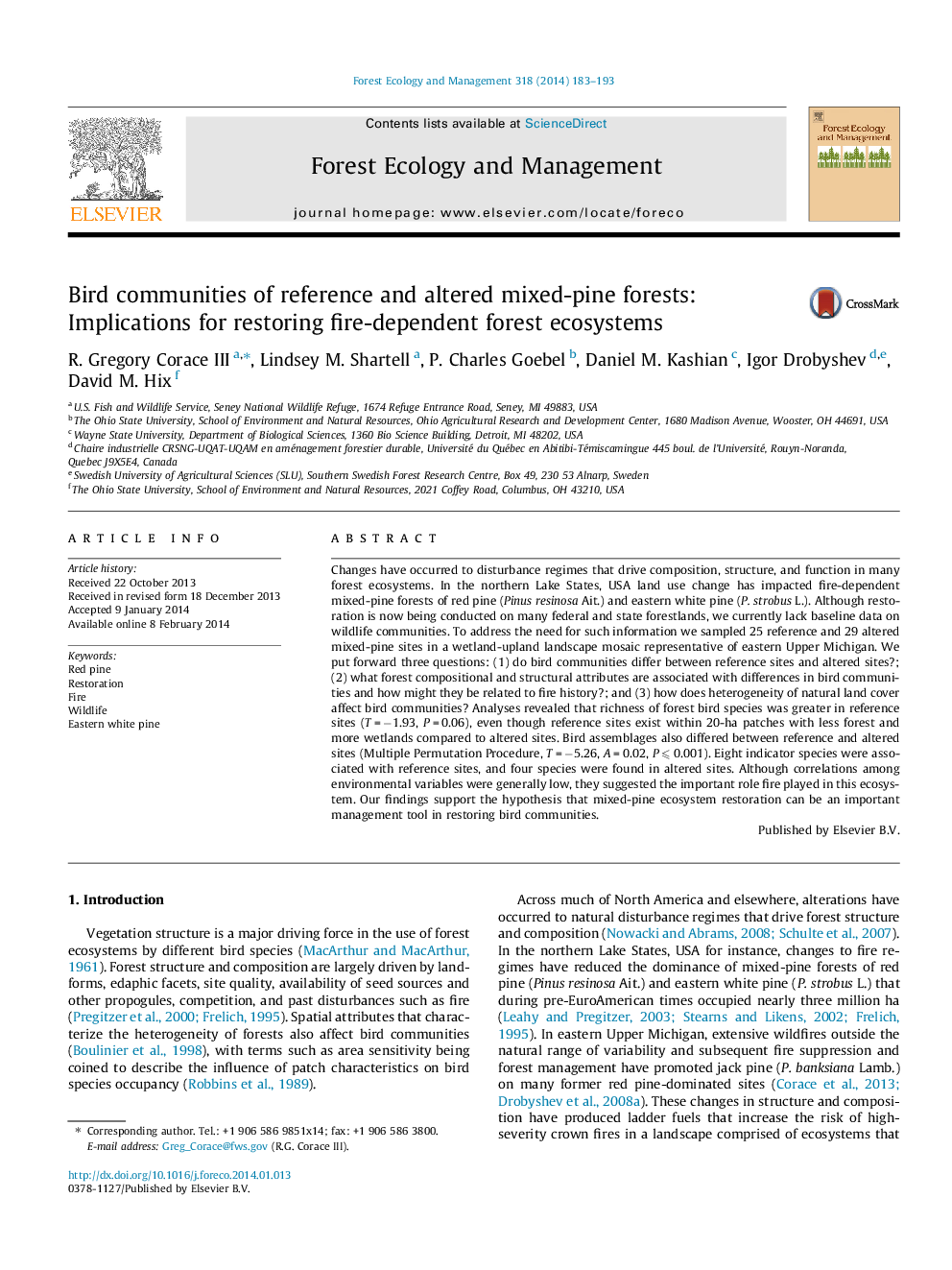| Article ID | Journal | Published Year | Pages | File Type |
|---|---|---|---|---|
| 6543583 | Forest Ecology and Management | 2014 | 11 Pages |
Abstract
Changes have occurred to disturbance regimes that drive composition, structure, and function in many forest ecosystems. In the northern Lake States, USA land use change has impacted fire-dependent mixed-pine forests of red pine (Pinus resinosa Ait.) and eastern white pine (P. strobus L.). Although restoration is now being conducted on many federal and state forestlands, we currently lack baseline data on wildlife communities. To address the need for such information we sampled 25 reference and 29 altered mixed-pine sites in a wetland-upland landscape mosaic representative of eastern Upper Michigan. We put forward three questions: (1) do bird communities differ between reference sites and altered sites?; (2) what forest compositional and structural attributes are associated with differences in bird communities and how might they be related to fire history?; and (3) how does heterogeneity of natural land cover affect bird communities? Analyses revealed that richness of forest bird species was greater in reference sites (T = â1.93, P = 0.06), even though reference sites exist within 20-ha patches with less forest and more wetlands compared to altered sites. Bird assemblages also differed between reference and altered sites (Multiple Permutation Procedure, T = â5.26, A = 0.02, P ⩽ 0.001). Eight indicator species were associated with reference sites, and four species were found in altered sites. Although correlations among environmental variables were generally low, they suggested the important role fire played in this ecosystem. Our findings support the hypothesis that mixed-pine ecosystem restoration can be an important management tool in restoring bird communities.
Related Topics
Life Sciences
Agricultural and Biological Sciences
Ecology, Evolution, Behavior and Systematics
Authors
R. Gregory III, Lindsey M. Shartell, P. Charles Goebel, Daniel M. Kashian, Igor Drobyshev, David M. Hix,
